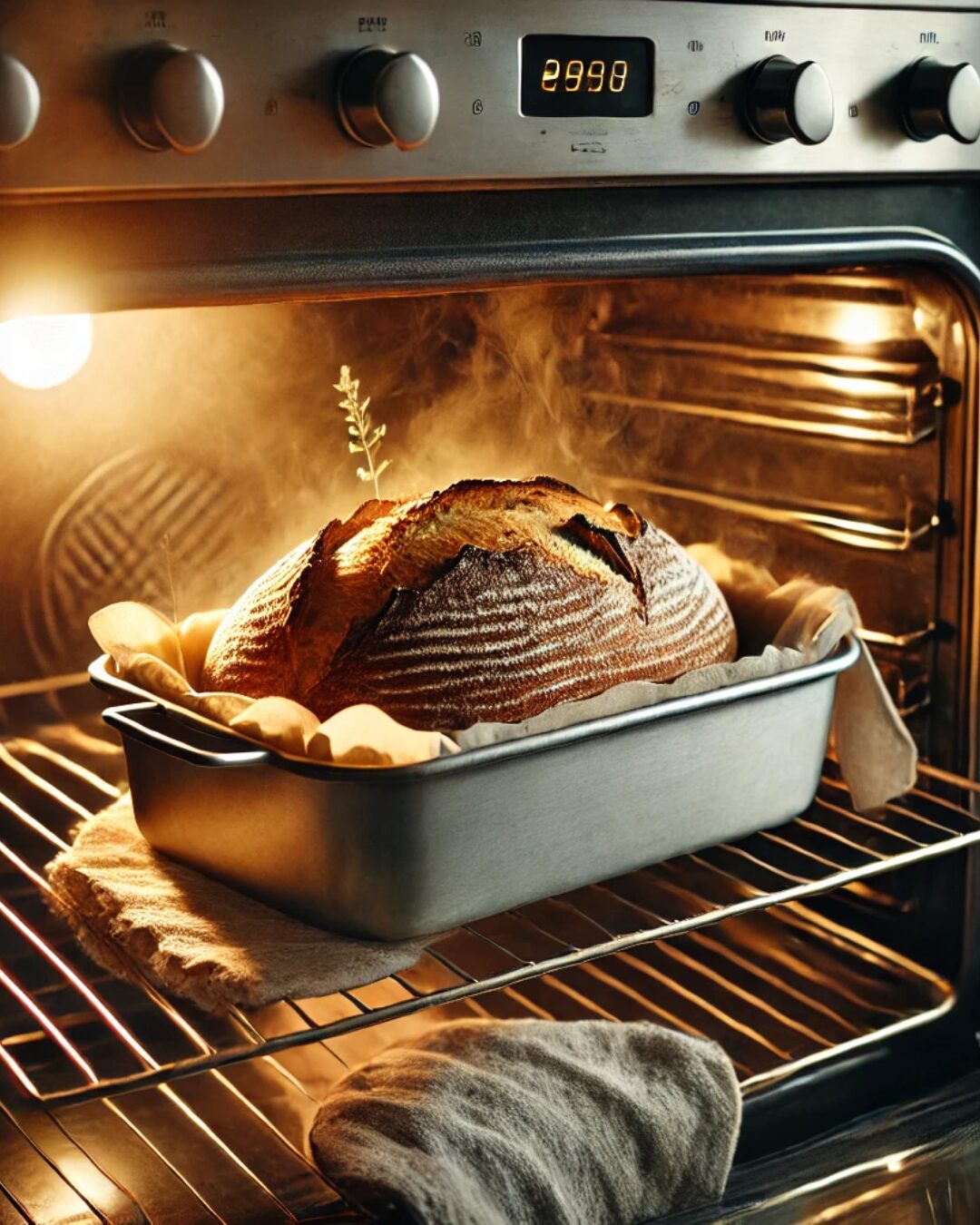While baking bread with my friend, I noticed she placed a pan of water in the oven before baking the dough. Curious about this extra step, I asked her why she did that. It turns out that adding water to the oven when baking bread can significantly improve the quality of the bread, especially when it comes to creating a beautiful, golden, and crispy crust.
In this blog post, I’ll explain why this simple trick works and how you can use it to bake better bread at home.
The Science Behind Adding Water to the Oven
When you place a pan of water in the oven while baking bread, the water evaporates, creating steam. This steam plays a crucial role in how the bread bakes, particularly in developing a crispy, chewy crust while keeping the interior soft and tender.
Here’s what happens:
- Steam Delays Crust Formation: In the initial stage of baking, the steam prevents the crust from forming too quickly by keeping the outer layer of the dough moist. This allows the bread to rise fully, resulting in a lighter, airier loaf.
- Crust Development: As the steam evaporates and the oven continues to heat up, the crust finally forms and turns a deep golden brown. The steam promotes caramelization and the Maillard reaction, which give the crust its rich color and complex flavors.
- Moisture Retention: The steam keeps the dough hydrated, which can improve the overall texture of the bread, making the interior soft and fluffy while the exterior stays crunchy.
How to Use Steam for Better Bread
If you’re interested in trying this technique at home, here’s a simple step-by-step guide:
- Preheat Your Oven: Place a metal pan or cast iron skillet on the bottom rack of your oven while preheating. Set the oven to the desired temperature for your bread recipe.
- Prepare Your Dough: While the oven is heating, prepare your bread dough as usual, shaping it and letting it rise.
- Add Water: Once the oven is fully preheated and you’re ready to bake, place your bread on the middle rack. Carefully pour about 1 cup of hot water into the preheated pan at the bottom of the oven. Be careful of the steam that will rise when you do this!
- Close the Oven Door Quickly: After adding the water, close the oven door quickly to trap the steam inside.
- Bake as Usual: Let the bread bake according to your recipe. You’ll notice that the crust develops beautifully, with a crisp exterior and soft interior.
What Kind of Bread Benefits from Steam?
The steam technique is particularly effective for certain types of bread, especially those with a thick, hearty crust, such as:
- Artisan-style breads: This includes sourdough, ciabatta, and rustic loaves, where the crusty exterior is a hallmark of quality.
- French baguettes: The crispy, golden crust of a baguette is achieved with the help of steam.
- Challah or brioche: While these breads are known for their soft texture, steam can still enhance the exterior.
However, for softer breads like sandwich loaves or sweet breads, you might not need to add steam as they typically don’t require a crusty exterior.
Other Ways to Introduce Steam
If you don’t have a metal pan or are looking for alternative methods to create steam, here are a few other techniques:
- Spraying Water: Use a spray bottle to mist water inside the oven right after placing the bread in. This is a quick way to generate steam without using a pan.
- Ice Cubes: Some bakers place ice cubes directly in the oven (on a tray or skillet) when they put in their bread. The ice melts and creates steam in the oven.
- Dutch Oven Method: Baking bread in a Dutch oven traps moisture inside the pot, creating steam naturally. This is another excellent method to achieve a crispy crust.
Why This Simple Trick is So Effective
Adding water to the oven is one of those small, easy-to-implement tricks that can make a big difference in your bread-baking results. My friend’s secret technique has been a game changer for me, and now I always use steam when I bake crusty loaves.
It’s all about creating the right environment for the dough to rise, develop a crisp crust, and produce a tender interior. If you’ve been struggling to get that bakery-quality crust at home, give this method a try and see how it transforms your bread.
Final Thoughts
Whether you’re an experienced baker or just getting started, learning new techniques like using steam in your baking can take your skills to the next level. With just a pan of water and a little extra care, you’ll be able to create bakery-worthy loaves with a perfect crust.
Have you tried using steam when baking bread? What other baking tips have helped you improve your results? Let me know in the comments below!

